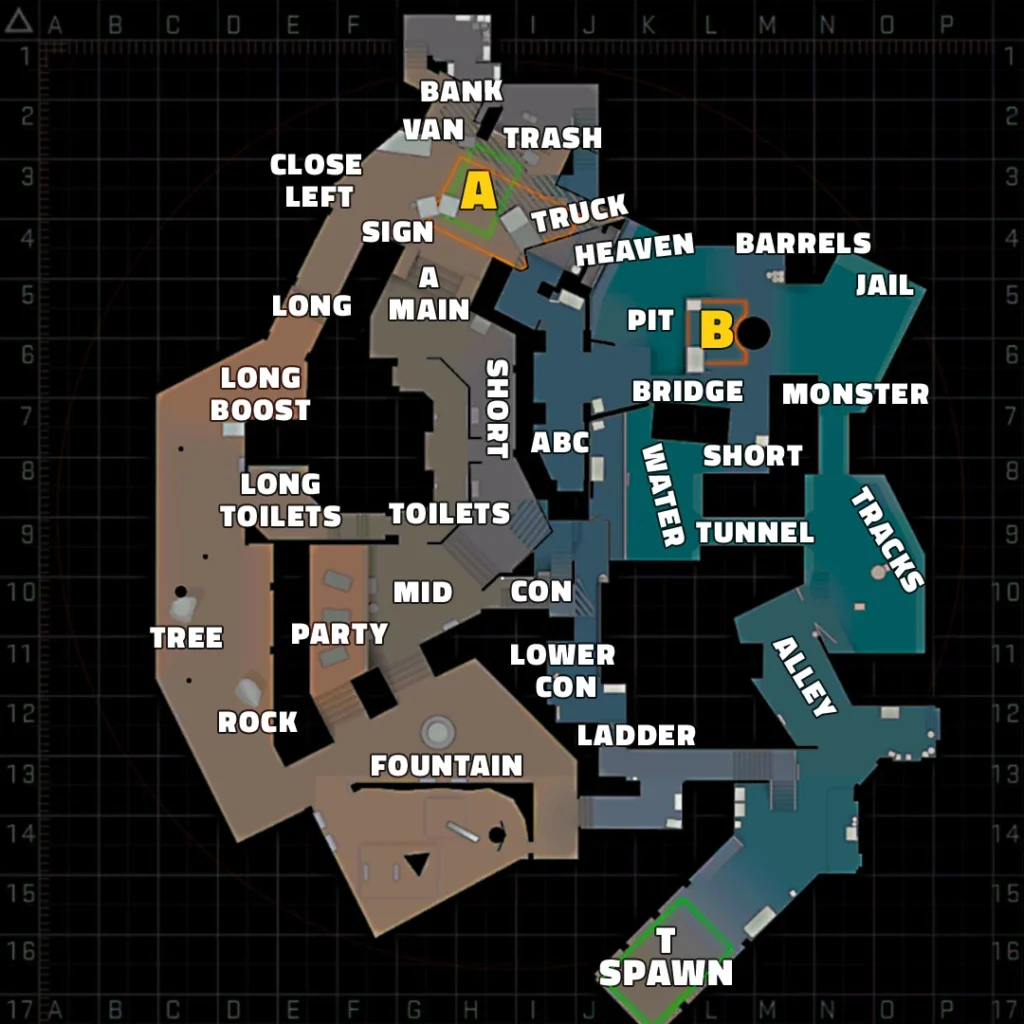The Hookup Doctor's Guide
Navigating the world of modern dating and relationships.
Map Awareness: The Secret Ingredient to CS2 Success
Unlock your full potential in CS2! Discover the game-changing impact of map awareness and elevate your gameplay to new heights.
Top 5 CS2 Maps That Every Player Should Master
In the competitive landscape of CS2, mastering specific maps can significantly enhance your gameplay and overall performance. Among the numerous maps available, five stand out as essential for every player to master: Dust II, Inferno, Mirage, Nuke, and Overpass. Each of these maps presents unique challenges and opportunities that can shape your strategy and teamwork. Understanding the layout, callouts, and common tactics can give you a substantial edge over your opponents.
Starting with Dust II, often hailed as a classic, it offers a balanced mix of sniper and rifle play, making it a favorite among many players. Inferno, on the other hand, challenges players with its tight corners and multi-layered bomb sites, requiring precise communication and teamwork. Then there's Mirage, known for its diverse gameplay dynamics that reward players who master mid-control. Nuke offers a unique vertical gameplay experience that tests players’ adaptability, while Overpass emphasizes map control and strategic engagements. By dedicating time to mastering these five maps, players can elevate their CS2 experience and improve their overall skill set.

Counter-Strike is a highly competitive first-person shooter that has captivated gamers since its inception. Players are divided into teams, usually terrorists and counter-terrorists, and must complete various objectives, such as planting or defusing a bomb. For players looking to enhance their experience, understanding how to clear decals cs2 can significantly improve visibility during intense matches.
How Understanding Map Layouts Can Elevate Your CS2 Game
Understanding map layouts in CS2 is crucial for any player looking to elevate their game. Each map is designed with specific zones, pathways, and strategic points that can significantly affect gameplay. By becoming familiar with the topography of a map, players can devise better strategies, anticipate enemy movements, and position themselves advantageously. For example, knowing where to expect ambushes or control critical areas like bomb sites can mean the difference between victory and defeat.
Additionally, mastering map layouts allows players to utilize effective communication with teammates, which is paramount in a team-based game like CS2. Understanding key locations enables players to share information succinctly, such as calling out enemy positions or coordinating plays. Consider creating a mental map or even sketching out key areas, so you can better memorize routes and important spots. Investing time in understanding map layouts will not only enhance your personal gameplay but also contribute positively to your team's overall performance.
Common Mistakes Players Make on Maps and How to Avoid Them
Many players encounter frequent challenges when navigating game maps, often leading to mistakes that hinder their performance. Common mistakes include failing to recognize key landmarks, which can result in disorientation and wasted time. For example, players might not utilize the mini-map effectively, missing critical cues for enemy movements. Furthermore, neglecting to plan routes in advance can lead to unnecessary confrontations. To avoid these pitfalls, players should familiarize themselves with the lay of the land and regularly refer back to the mini-map. This practice not only enhances awareness but also improves strategic positioning in critical moments.
Additionally, players often underestimate the importance of communication with teammates when navigating maps. Common mistakes include not sharing valuable information, such as enemy locations or resource availability, which can lead to missed opportunities or team losses. To avoid these errors, it's crucial to maintain open lines of communication. Utilizing voice chat or in-game text can foster better teamwork and ensure everyone is on the same page during critical missions. Frequent updates about map objectives and enemy movements can significantly enhance the team's overall effectiveness and lead to a more coordinated approach.